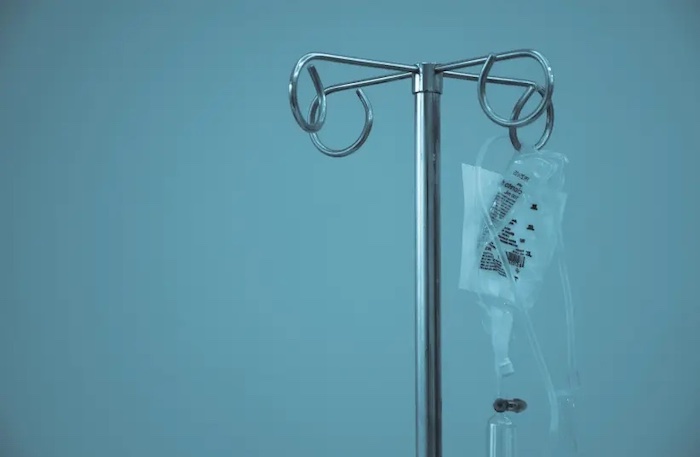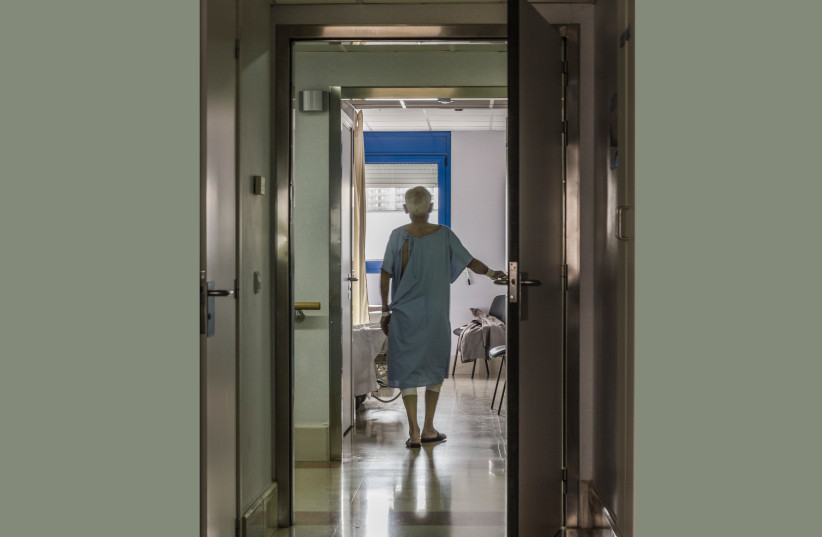— Including Losing Senses
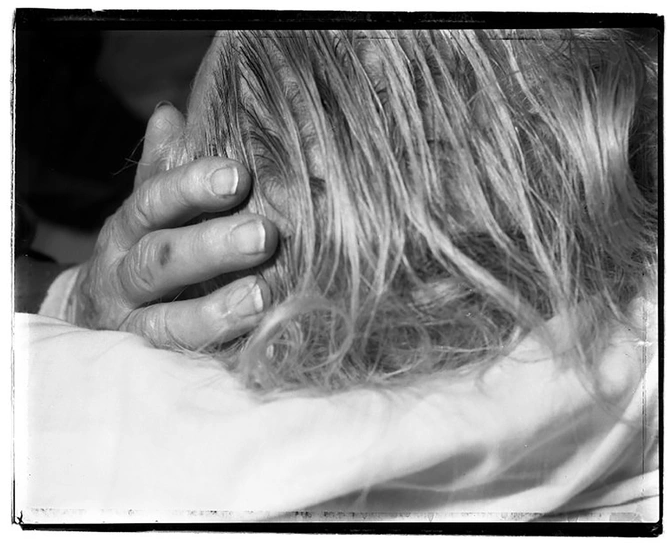
by Heather Newgen
Death is something we will all face. Nobody knows when our time is up, but it’s estimated that 56 million people die each year. The average lifespan for men in the United States is 74.5 and for women it’s 80.2, according to World Data, and before we pass chances are we’ll experience the death of a loved one, friend or colleague.
Even if you have a warning that your loved one is dying, it’s not something you can really prepare for. Grief is a terrible thing to go through, but knowing the final stages of life can be helpful. “There are stages to death, and when they are recognized and accepted, it opens the door for peace and grace,” Niki Yarnot, MSW, LASW, a career and life coach who previously worked for 10 years as both an inpatient and outpatient hospice social worker, tells us.
Each person’s journey is unique and different. Some people will have a steady decline, while others will transition quickly. That said, there are often signs that the end is near. “Healthcare workers approaching the conversation around the end of life is SO important. Michelle Saari MSc, RD emphasizes. “Nutrition is one of the key indicators we see that the end of life may be coming. We see a lot of unintentional weight loss, decreased appetite, loss of independence in eating their meals, difficulty swallowing. As Clinical Dietitians, we tend to see the end coming six months out. It is so important that we are trained to talk about the end of life early, so that loved ones can not only prepare themselves, but also so they aren’t surprised when the time is coming.
Tomi Mitchell, a Board-Certified Family Physician with Holistic Wellness Strategies tells us, “Death by old age is an intriguing concept, but it is rarely as simple as people assume it to be. Contrary to popular belief, death due to old age is not actually caused by the body physically wearing out or breaking down. Instead, it is usually a combination of diseases and other illnesses that accumulate over time resulting in organ failure and ultimately death. As people get older, their bodies become weaker which makes them more susceptible to physical ailments like heart disease and stroke; these are two of the most common causes of death among those of advanced age. Other risks that older individuals face include cancer, dementia, diabetes, and respiratory issues – all of which can contribute to an older person’s demise within a matter of years or even months. Various lifestyle choices such as poor diet, lack of exercise, smoking, excessive drinking, drug abuse, and stress can also have wide-reaching implications when combined with age-related factors. In short, death due to old age is not necessarily caused by one specific factor – instead, it is often the result of multiple issues connected with aging or unhealthy living.”
Erin Blakely, LNHA and MSW adds, “Technically, no one dies of old age. As we get older our bodies naturally start to decline in physical capacity as well as energy levels. This is due to the aging process, which is an incredibly complex set of biological changes that occur slowly over time. As you age, your cells start to break down and become less efficient, leading to weakened muscles, slower reaction times and overall decreased physical or mental performance. Your immune system also takes a hit as you get older. Older people tend to be more susceptible to illnesses such as colds and flu due to their weakened immune systems. Your body’s ability to fight off infection decreases over time as well, which can lead to other health complications such as cancer or heart disease.
When it comes to death from old age, there are several potential causes. The most common cause is cardiovascular disease, which refers to any condition that affects the heart or blood vessels (e.g., high blood pressure or coronary artery disease). Other common causes include stroke and various forms of cancer. Additionally, some people may die from complications related to chronic illnesses such as diabetes or dementia. Another factor contributing towards death from old age is simply the gradual deterioration of bodily systems over time. This can be accelerated by lifestyle factors such as poor diet or lack of exercise. But ultimately even healthy individuals cannot escape the effects of aging on the body forever, your physical capabilities will fail you and cause your eventual demise.”
Nancy Mitchell, a Registered Nurse with Assisted Living Center states, “Dying of old age isn’t a mysterious phenomenon like some people make it sound. Death always comes with a cause, whether it was detected earlier, treated without success, or neglected over the years. There’s always some condition or illness behind death, even when people die in their sleep. The most common cause of “death in old age” are heart attacks, cancers, and strokes. In some cases, it’s an infection that the aging body struggles to fend off unsuccessfully. That’s the point of conducting autopsies—to discover the true reason behind a passing. No one ever writes “died in peace” on a death certificate. There must be an underlying medical cause.”
Dr. Mitchell says, “The end of life is something that we all must face someday, and while there are no hard and fast rules as to how it should unfold, some believe there may be stages in the process. Depending on the culture or Life Story approach, these stages may include letting go physically and emotionally, preparing practical matters such as finances, addressing unfinished business such as relationships, reaching a deeper level of consciousness, accepting reality and death, preparing for a spiritual journey, or actively planning a “good” death. These concepts can often help those dealing with loss to make sense of their experiences as well as to honor their loved ones who have departed. Though no two stories will follow the same path, being mindful of life’s unique journeys can help us appreciate our connections beyond the physical realm.”
Yarnot explains, “There are stages to death, and when they are recognized and accepted, it opens the door for peace and grace. Someone may be “dying” over the course of days, weeks, even months. As the final days enter though, identifiable changes begin. People often experience visioning. Often they appear to be speaking to loved ones who have died before them. They may be standing next to the bed, or sitting in a nearby chair – but the dying individual sees and hears them clearly. It is important to note, this is not a hallucination. Hallucinations cause distress and fear. Visioning is generally peaceful and calming.. You might also notice the dying individual looking up and to the right corner of the room – again, a sign of visioning.”
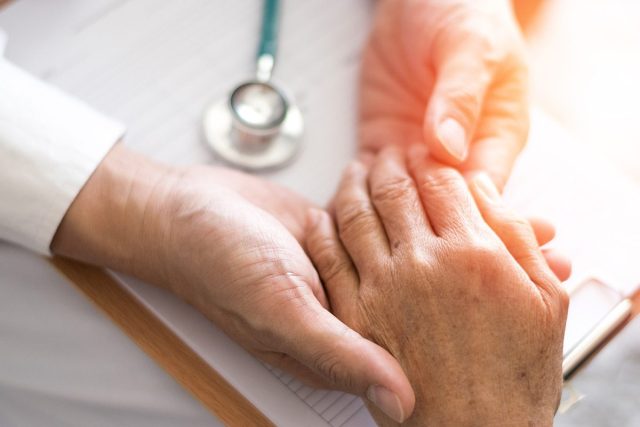
According to Dr. Mitchell, “When someone enters the final stage of life, the first sense to begin deteriorating is usually smell. As the loss of this sense progresses, people may find themselves struggling to enjoy the foods and beverages they used to love. They can also lose the ability to detect unpleasant odors in their environment. As a result, it’s essential for caregivers of those in this stage to keep the living spaces clean of any unwanted or bad smells. Also, introducing pleasant fragrances like scented candles, flowers or aromatic oils can help bring comfort and a sense of familiarity to those approaching death. Ultimately, keeping their sense of smell intact is one way that we can honor and show our admiration for those in their last moments on earth.”
Blakely says, “For those with death imminent, you can usually recognize the signs of the physical changes occurring with their body. For example, their breathing may become more labored and shallow. This is especially true if they are experiencing congestive heart failure or another illness that affects their ability to breathe. They may even take short pauses in between breaths—a sign that their body is slowing down and preparing for death. Another physical sign that someone is nearing death is a change in their skin color. As time passes, their skin color may turn pale or ashen gray due to reduced circulation from lack of movement or oxygen deprivation from difficulty breathing. In some cases, the skin may also have a yellowish hue due to jaundice, which is often caused by liver malfunction. A decrease in urine output can also be an indication that someone’s life is coming to an end. The kidneys are responsible for producing urine, but when the body begins shutting down, they will produce less and less until eventually they stop altogether. The color usually changes as well to darker colored urine.”
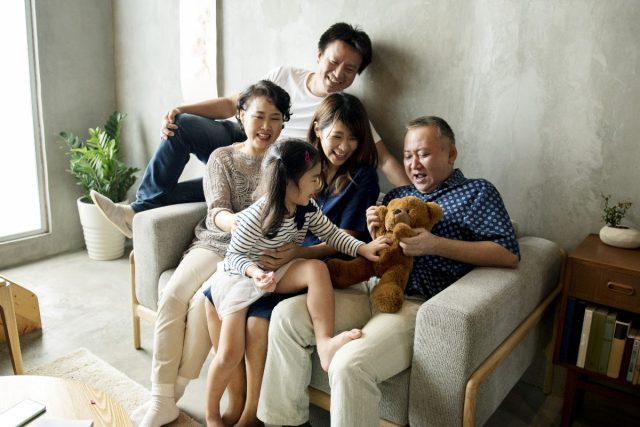
Jennifer Prescott, RN, MSN, CDP, founder of Blue Water Homecare and Hospice in Austin, TX says, “An end of life rally, or “terminal lucidity” may occur with your loved one. We see individuals wake up, ask for a Big Mac and fries, attend an event or have a normal visit with a friend or family member. This sudden burst of energy can allow family members one last opportunity to show love, make peace and apologize if necessary.”
Dr. Mitchell states, “An end-of-life rally involves an important period of time that a dying person experiences—where they make a final effort to remain mentally and physically present. A rally may include physical comfort measures to make the individual more comfortable, as well as spiritual guidance or a chance to make peace with their past and/or future plans. A patient may also get to spend time with friends and family, discuss funeral arrangements, or even write letters or start projects that can be completed after their death. During this difficult time, it is important for loved ones to provide psychological and emotional support so the person can transition peacefully.”
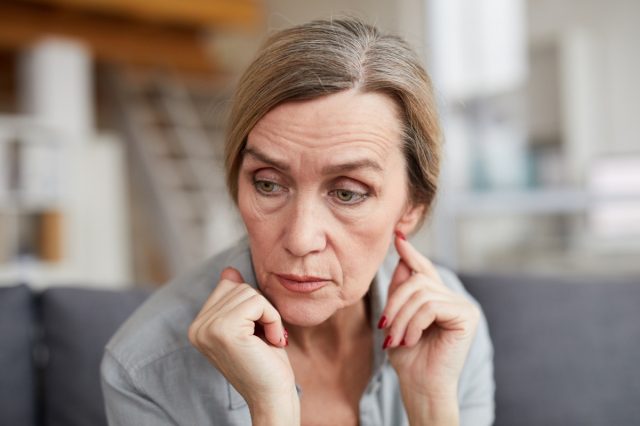
Dr. Mitchell says, “The final stage of dying is a time that marks the end of life. Signs that someone is about to die will depend on what illness they have but typically include difficulty breathing, changes in mental alertness, and physical weakness. In the days leading up to death, a person may become unresponsive and show signs of exhaustion. These feelings can be both disorienting and painful for family and loved ones who witness this process but being with someone during their dying moments can provide comfort and solace in addition to bringing closure to a life’s journey.”
Saari explains, “The final stage at end of life is a loss of consciousness and the body systems shutting down. We see the non-essential body systems start to slow down. Food and fluid intake is quite small, increased sleep and fatigue, less interactions. It’s a peaceful time and the goal is to make them as comfortable, pain free, and peaceful as possible. As a health care practitioner, our goal is to make them have the most peaceful dying process possible and support their loved ones in the transition.”
Prescott shares, “Physically, the body begins its final process which ends when the body is unable to sustain life. At this time the body is unable to maintain homeostasis and we see physical changes that are best managed with comfort enhancing measures through hospice care. The physical changes experienced during the dying process include temperature changes (hot or cold), skin color changes called mottling that indicate the blood is failing to circulate appropriately, increased sleeping, changes in mental status, decreased oral intake, incontinence, decreased urine output and breathing pattern changes and congestion. These physical changes are the body’s sign that it is slowing down and cannot maintain proper heart and lung function to maintain life. It is important to note that these are all normal changes at end of life and some symptoms such as shortness of breath, cough and congestion can be helped with medications prescribed by the hospice physician or attending physician.
The second dynamic occurs on the emotional, spiritual, and mental side. During this time a person begins to withdraw from their surroundings (including relationships) and conversations (and will eventually lose the ability to communicate). The process is usually a slow decline in a person’s ability to speak, and we see increased sleeping. Each person follows their own path; however, some want to have conversations to resolve any unfinished business in one’s life or a person will report hallucinations such as seeing people that have passed away previously in their room. Some may experience restlessness. Many people need to hear that it is ok to “let go” or “die” in order to feel at peace. Others may crave forgiveness, appreciation, and love to feel able to accept this time of transition. It is helpful to reassure your loved one during these times and contact your hospice nurse to help if they are uncomfortable, or restless. Sometimes restlessness is a lack of oxygen and there are oral medications such as Morphine, that can help in small doses to decrease a person’s sense of breathlessness and allow for better oxygenation.”
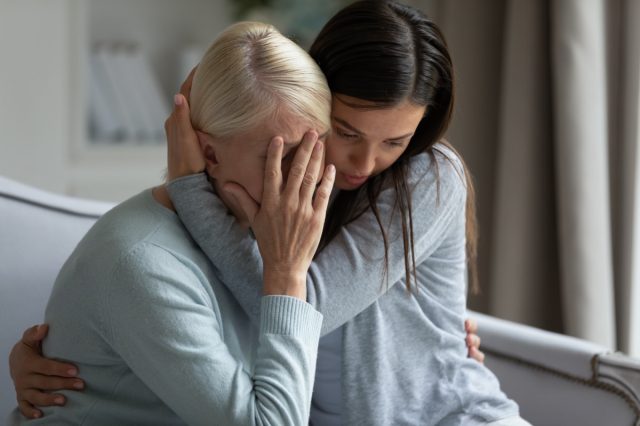
Saari shares, “I always speak with my patient’s loved ones and suggest that they simply focus on savoring their moments with their loved ones. Allow the healthcare workers to provide them with their physical needs, while the family simply focuses on every moment they can hold their hand. Many feel as though they aren’t doing enough, so they can provide mouth care, listen to their favorite music, talk to them about wonderful memories. Focus on treasuring those final moments and making peace with a final farewell.”
Dr. Mitchell says, “Those who are in the presence of a loved one who is close to death can find it emotionally challenging, so offering necessary and meaningful support is important. It involves being present, being aware of all the changes happening both physically and emotionally, allowing time for emotions to be expressed, and providing space and an opportunity to have meaningful conversations that cover topics from reminiscing about the past to discussing matters such as any unresolved issues or last wishes.
Furthermore, sitting and talking with those affected can provide comfort at a time when nothing else seems relevant. Ultimately, loving support can make a difference in their lives by enabling them to maintain a sense of self-respect and dignity as they enter into their final stages of life. In addition to providing emotional and physical support, it is important to consider practical matters such as making sure that their end-of-life wishes are respected. This can involve discussing topics such as the type of care they would prefer in their last stages of life, funeral arrangements, and any other decisions related to the end of life. Being present.”
Complete Article ↪HERE↩!
